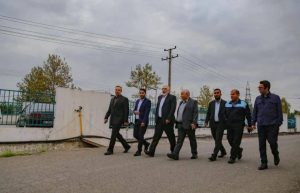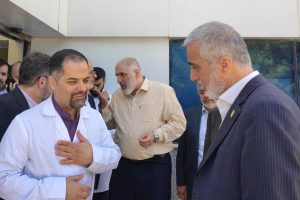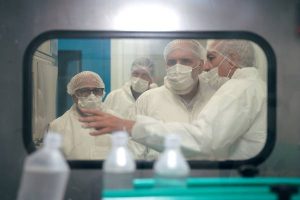
Footsteps & Gazes of Disease: A Revolution in Early Diagnosis
Barekat Health & Pharmaceutical Group: Long before humans learned to speak with words, they communicated with their bodies. Even today—at the height technological and verbal communication—our bodies still reveal truths before our tongues do, truths we may not even be consciously aware of ourselves.
In recent years, researchers in medical and behavioral sciences have ventured into a fascinating frontier: diagnosing diseases through body language.
This interdisciplinary field, blending psychology, neuroscience, medicine, and even artificial intelligence, suggests that subtle physical changes—such as the way a person walks, the expression on their face, the movement of their eyes, or even the posture they adopt while sitting—can serve as early warning signs of illness, often appearing well before any medical test detects the condition.
The significance of this approach is magnified in today’s world, where early diagnosis can save millions of lives. Once we understand that our bodily movements function like a “truthful mirror,” reflecting the real state of our health, our perception of others—and of ourselves—changes forever.
Science behind it: Why the body gives away the truth
Body language is a direct result of the nervous and muscular systems at work. When illness begins to take hold, even in the absence of clear clinical symptoms, these systems can change.
Parkinson’s disease, for example, often manifests as slight alterations in arm movement or walking speed long before the characteristic hand tremor appears. Many illnesses, in fact, alter our “movement patterns” before they cause pain or functional impairment.
The brain, spinal cord, and peripheral nerves form a complex network, where even the smallest disruption can affect muscular motion. By using high-precision filming, motion analysis, and even movement sensors, physicians and researchers can detect abnormal patterns. In such cases, body language becomes a sophisticated diagnostic tool—without the patient uttering a
single word.
Eye movements: A window into brain & nervous system
The eyes are more than the “mirror of the soul”—they are a living map of brain health. Recent studies show that changes in eye movement patterns can be early indicators of diseases such as Alzheimer’s, multiple sclerosis (MS), and even thyroid disorders.
For instance, individuals in the early stages of Alzheimer’s often lose the ability to smoothly track a moving object. In MS, involuntary, rapid eye movements—known as nystagmus—may be among the first signs. Even uncontrolled diabetes can affect the optic nerve, leading to abnormal ocular responses. Today, advanced cameras combined with AI algorithms can analyze these movements in milliseconds, providing precise neurological health assessments.
Gait: Body’s moving diary
A person’s gait—the unique pattern of their walk—is as distinctive as a fingerprint. Illness can subtly alter this pattern. Research has shown that slower steps, dragging feet, or reduced arm swing may point to conditions such as Parkinson’s disease, minor strokes, or even depression.
Psychological conditions can also leave their mark. Depressed individuals often walk with their heads down and take shorter steps. By recording and analyzing a patient’s movement over a short distance, doctors can identify red flags and initiate further examinations.
Notably, this method is non-invasive, low-cost, and is rapidly gaining traction in Western medical practice.
Hand and finger movements: The nervous system’s hidden radar Hands-and particularly fingers—are among the body’s most sensitive indicators of neurological change.
Disorders like Parkinson’s or amyotrophic lateral sclerosis (ALS) often begin with barely perceptible tremors or reduced finger coordination. Even subtle changes in how a person grips objects or presses buttons can signal early disease
Simple tests, such as tapping the thumb and forefinger repeatedly, are used to assess motor function. In inflammatory joint conditions, finger movements may become slow and restricted, with patients unconsciously altering their body language to avoid pain. When detected by a trained eye, these changes can dramatically accelerate the start of treatment.
Posture & seating: Silent language of the spine
How a person stands or sits can reveal valuable clues about their muscular, neurological, and even mental health. Abnormal spinal curvature, slouched shoulders, or sudden hunching may point to osteoporosis, muscle weakness, or nerve disorders.
In certain respiratory diseases, patients instinctively lean forward while sitting to make breathing easier. Heart patients may shift their seating position to reduce pressure on the chest.
Psychologists have also observed that chronic depression or anxiety often leads to reduced eye contact and a closed, defensive posture. Careful observation of posture can therefore provide both medical and psychological insights.
Micro gestures: Millisecond signals of disease
Micro gestures—fleeting facial and body movements lasting less than a second—can carry important messages. A rapid twitch in the facial muscles, for instance, may indicate neurological issues or mineral deficiencies.
In cases of chronic pain, a person’s facial expression may shift for a brief moment during movement, even if they are trying to conceal their discomfort. High-speed imaging tools can capture and analyze these changes. Looking ahead, combining such technology with AI could yield extremely accurate, non-invasive diagnostic tools capable of alerting individuals to health risks before they even visit a doctor.
Future of disease diagnosis through body language
What we are seeing today in the field of body-language-based diagnostics is just the beginning. Researchers are developing algorithms capable of analyzing everyday video footage—including casual smartphone clips—to detect early signs of illness.
This technology holds revolutionary potential for prevention and care, especially in regions with limited access to healthcare. However, it also raises ethical and privacy concerns, as analyzing body language without consent could infringe on personal rights.
The future of this science depends on striking a balance between innovation and individual privacy. One fact remains certain: long before we are aware of our own illness, the body has already told the story.
-
Barkat Group specialized meeting

-
Safa Appointed as Barekat General Director

-
Barekat Health & Pharmaceutical Group at the 10th Iran Pharma Exhibition

-
Ali Safa visits Sobhan Oncology & Sobhan Darou

-
Pirsalehi & Safa visit Saman Daroo 8 Knowledge-based Company

-
Barekat Managing Director Visits Samen Pharmaceutical Company

-
Honoring Pharmacists’ Day

-
Barekat Top Executives Visiting to Barekat Hospital

